The Spangle-cheeked tanager is a unique bird with distinctive features that make it stand out from others in its species. Its orange belly, cobalt wings, and turquoise spangles are particularly eye-catching.
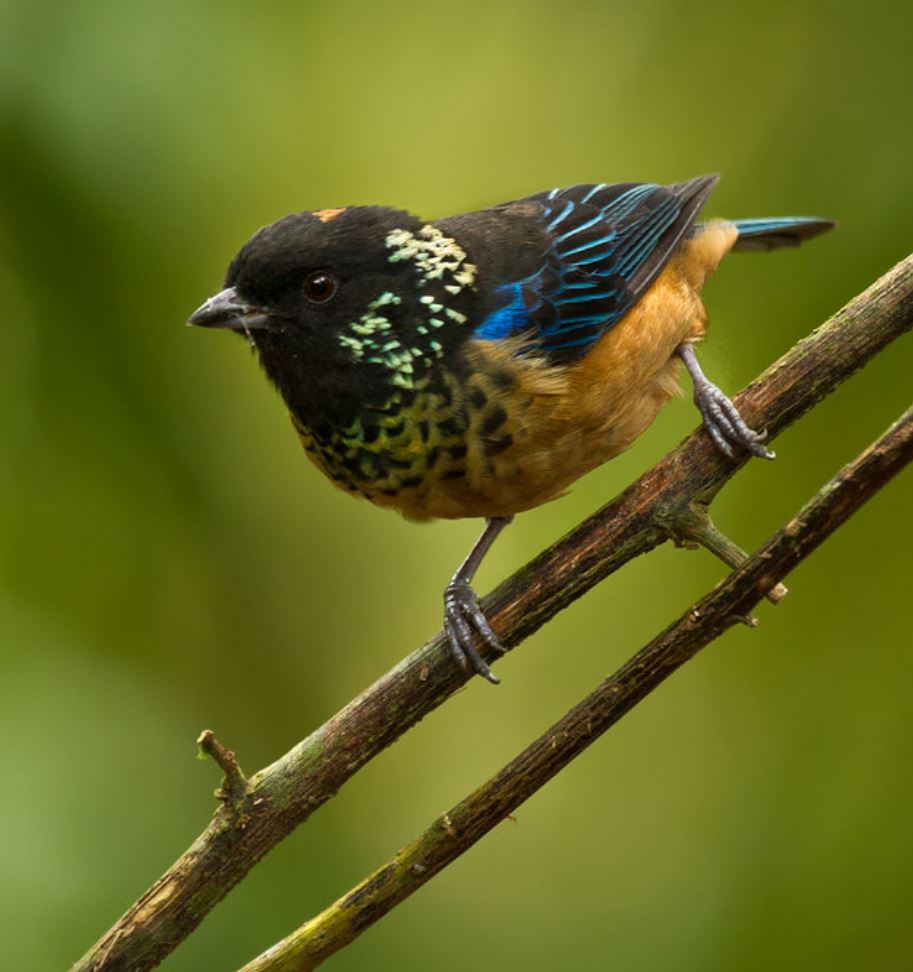
Chris Jimenez captured a striking image of the spangle-checked tanager in the wild. This particular bird measures approximately 13 cm (5.1 inches) in length and weighs around 20 g (0.71 ounces). Its head is primarily black, while its upper area and breast are a similar color. The breast, sides of the face, and neck have blue scaling, and the top of the head boasts a rufous crown. The wings and tail are outlined in blue, the rump is green, and the belly is cinnamon.
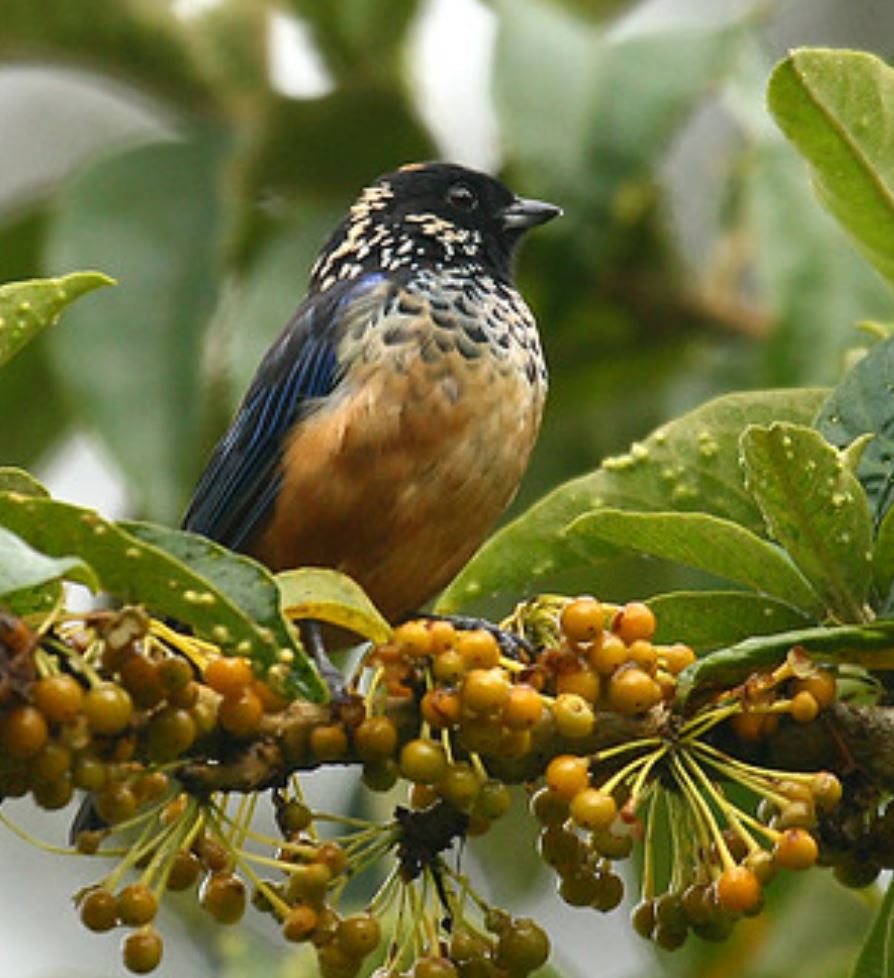
Michael Woodruff’s photo titled “Spangle-cheeked Tanager,” which is under the CC BY-SA 2.0 license and cropped, depicts male and female Spangle-cheeked Tanagers that have similar appearances. However, males have a greater extent of blue scaling. Juvenile birds, on the other hand, are less colorful compared to adult males, with no crown patch and less noticeable scaly features.
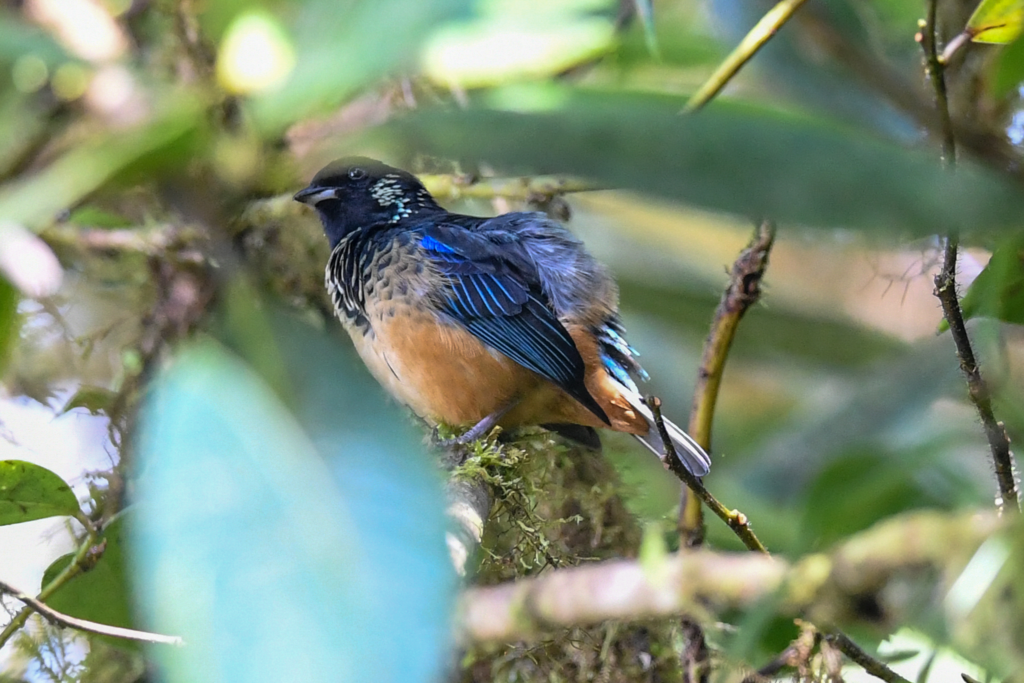
Chloe and Trevor Van Loon’s photo titled “calliste pailleté, spangle-cheeked tanager, tangara caripinta” is authorized under the CC BY 4.0 license. The species of this bird is exclusively found in Costa Rica and Western Panama.
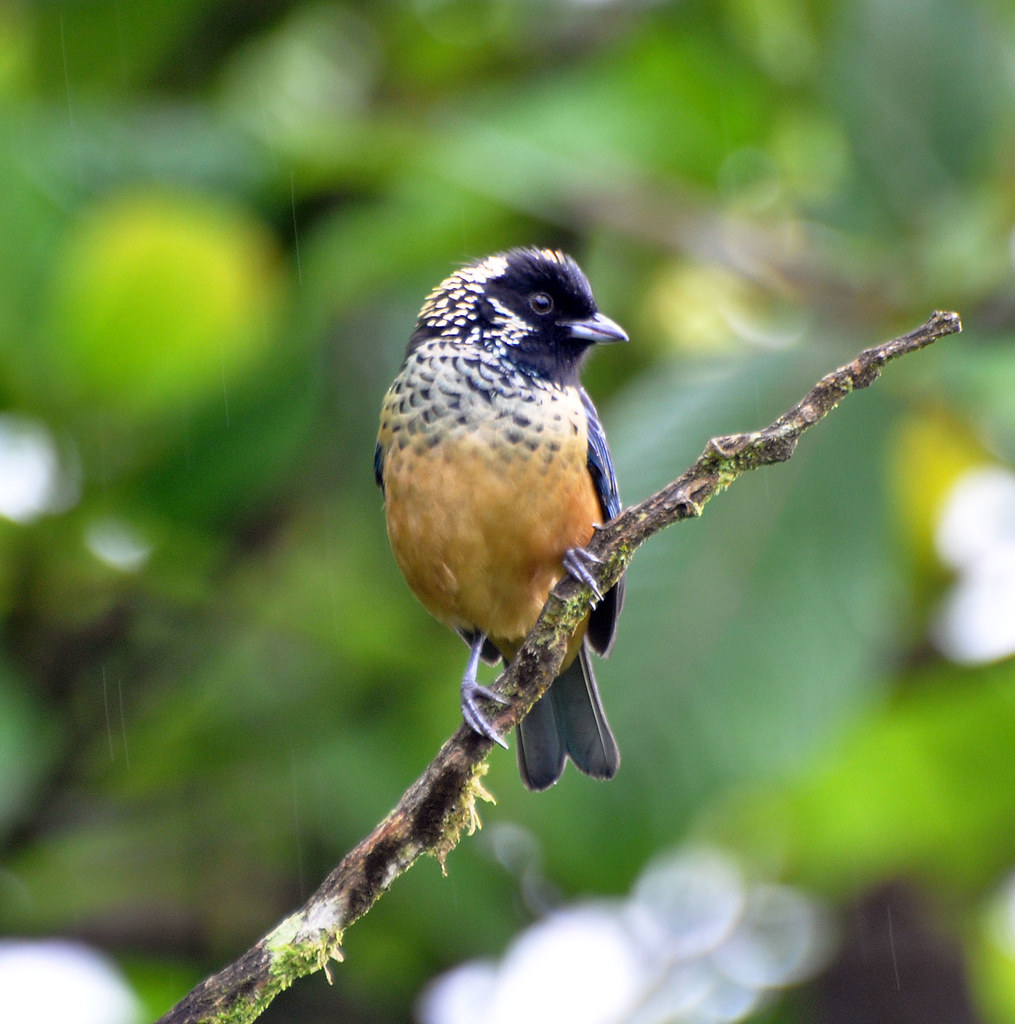
Don R. Faulkner’s CC BY-SA 2.0 licensed photo captures the beauty of the Spangle-cheeked Tanager, a bird known to inhabit the upper levels of canopies in forests with abundant epiphytes, ranging from 1,200 to 3,000 m (3,900 to 9,800 ft) above sea level. However, they are also known to occupy semi-open areas, forest edges, and secondary growth at lower altitudes.
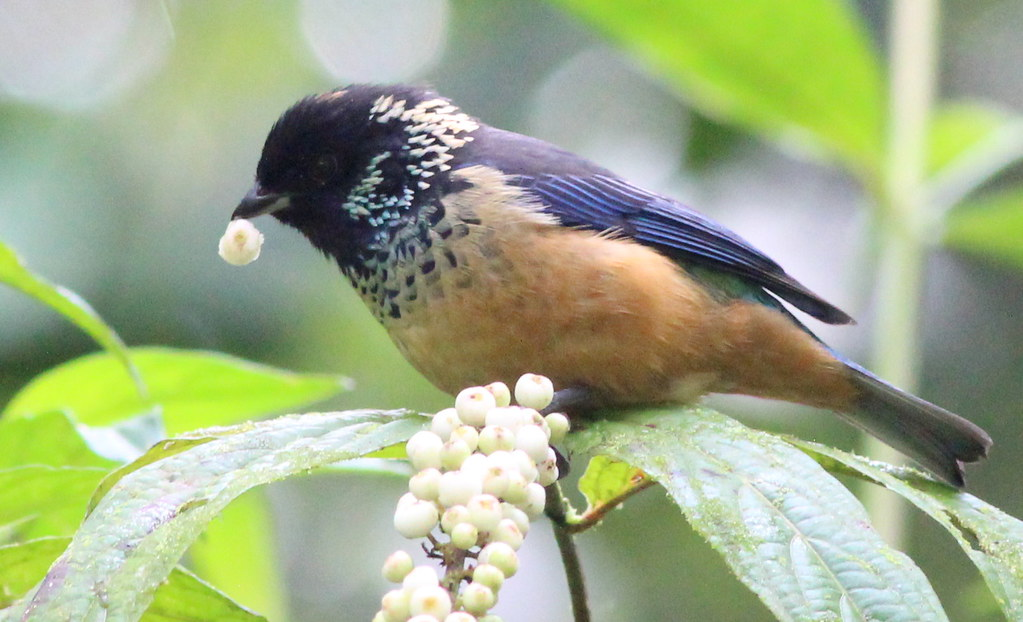
The spangle-cheeked tanager prefers to feed on fruits, although it also consumes insects and spiders. It commonly swallows its prey in one go. The photo entitled “IMG_3584” by gary_leavens is licensed under CC BY-SA 2.0.
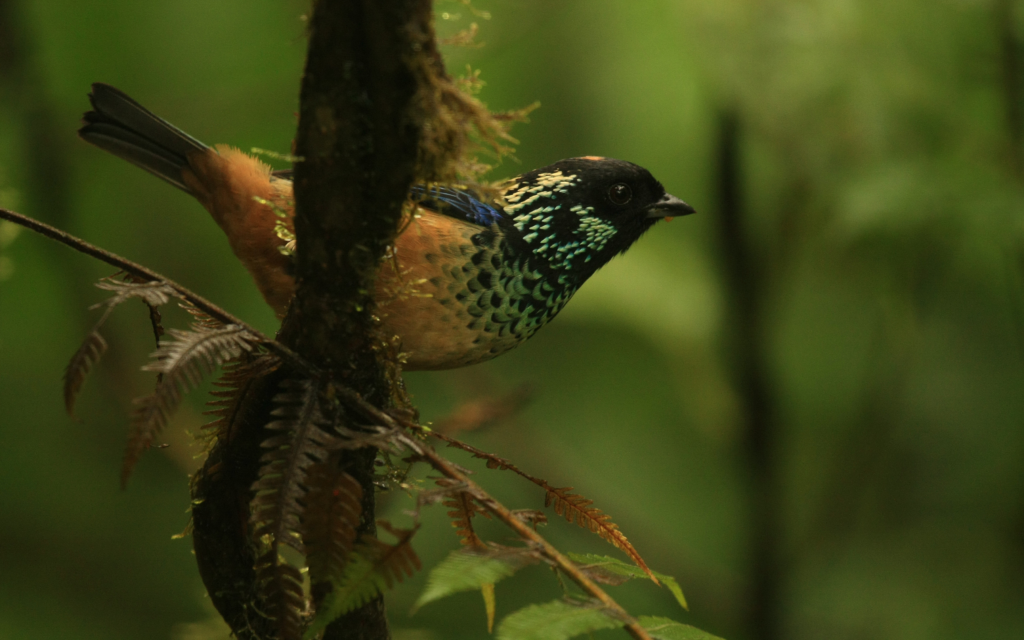
During the breeding season, these avian creatures construct a nest shaped like a cup. Typically, this is found nestled on a tree fork or a branch surrounded by epiphytes. The inside of the nest is furnished with bromeliad leaves where the bird lays two eggs. This image of a Tangara dowii was captured by Tim from Ithaca and licensed under CC BY 2.0.
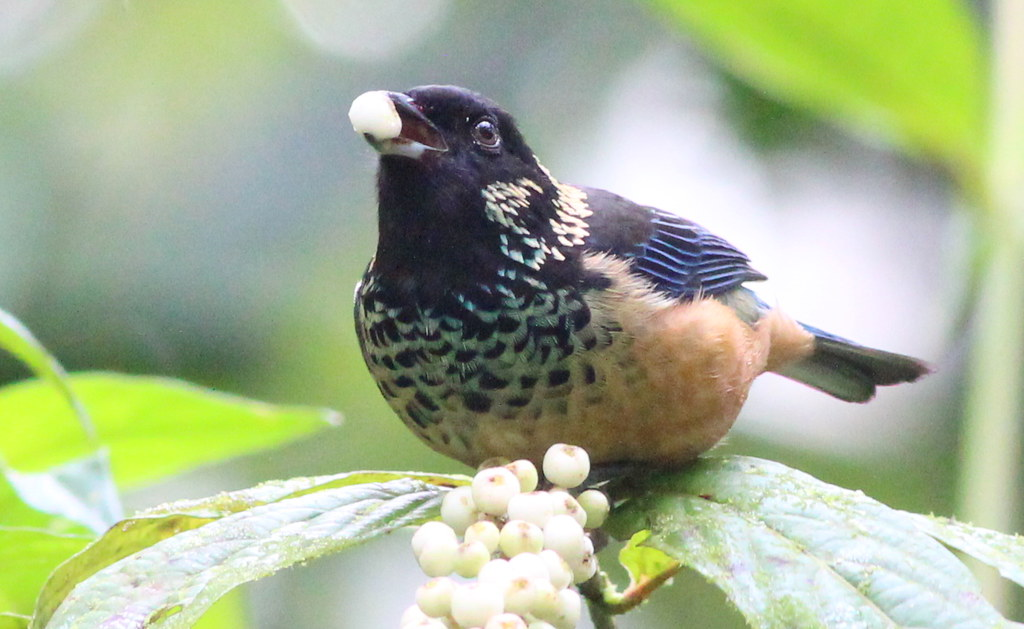
The bird captured in the photo titled “IMG_3580” taken by gary_leavens is classified as a species of least concern on the IUCN Red List.

Melissa McMasters’ photo entitled “Calliste Pailleté, Spangle-Cheeked Tanager, Tangara Caripinta” is available under the CC BY 4.0 license.
